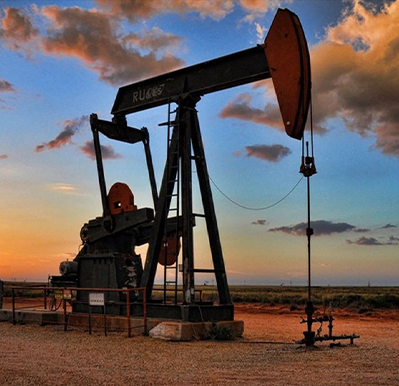- Afrikaans
- Albanian
- Amharic
- Arabic
- Armenian
- Azerbaijani
- Basque
- Belarusian
- Bengali
- Bosnian
- Bulgarian
- Catalan
- Cebuano
- Corsican
- Croatian
- Czech
- Danish
- Dutch
- English
- Esperanto
- Estonian
- Finnish
- French
- Frisian
- Galician
- Georgian
- German
- Greek
- Gujarati
- Haitian Creole
- hausa
- hawaiian
- Hebrew
- Hindi
- Miao
- Hungarian
- Icelandic
- igbo
- Indonesian
- irish
- Italian
- Japanese
- Javanese
- Kannada
- kazakh
- Khmer
- Rwandese
- Korean
- Kurdish
- Kyrgyz
- Lao
- Latin
- Latvian
- Lithuanian
- Luxembourgish
- Macedonian
- Malgashi
- Malay
- Malayalam
- Maltese
- Maori
- Marathi
- Mongolian
- Myanmar
- Nepali
- Norwegian
- Norwegian
- Occitan
- Pashto
- Persian
- Polish
- Portuguese
- Punjabi
- Romanian
- Russian
- Samoan
- Scottish Gaelic
- Serbian
- Sesotho
- Shona
- Sindhi
- Sinhala
- Slovak
- Slovenian
- Somali
- Spanish
- Sundanese
- Swahili
- Swedish
- Tagalog
- Tajik
- Tamil
- Tatar
- Telugu
- Thai
- Turkish
- Turkmen
- Ukrainian
- Urdu
- Uighur
- Uzbek
- Vietnamese
- Welsh
- Bantu
- Yiddish
- Yoruba
- Zulu
api casing sizes
Understanding API Casing Sizes An Overview
The American Petroleum Institute (API) has established a set of standards that play a pivotal role in the oil and gas industry, and one of the essential components of these standards pertains to API casing sizes. Casing is a vital part of oil and gas wells, serving as the structural framework that supports the wellbore while preventing the collapse of the surrounding earth and protecting groundwater from contamination. Understanding API casing sizes is crucial for professionals in the industry, as it directly impacts the safety, efficiency, and effectiveness of drilling operations.
What are API Casings?
API casings are large-diameter pipes that are placed in the wellbore to support the walls, prevent contamination, and ensure the structural integrity of a well. These pipes are manufactured to meet specific standards set forth by the API. The API provides guidelines regarding the dimensions, physical and chemical properties, and performance of these casings to ensure they are suitable for the challenging environment of oil and gas extraction.
Casing Sizes Standardization and Importance
API casing sizes are standardized based on nominal diameter, which is a dimension that indicates the size of the casing pipe, and wall thickness, which ensures the casing can withstand various pressures and environmental conditions encountered during drilling operations. The standardization of casing sizes facilitates communication and compatibility among manufacturers, drilling contractors, and operators, ensuring that everyone in the supply chain uses the same specifications.
The most commonly used API casing sizes range from 4.5 inches to 20 inches in outside diameter (OD) with corresponding wall thicknesses. The American National Standards Institute (ANSI) provides a detailed specification for each casing size, which includes the design and mechanical properties. These specifications account for factors such as yield strength, tensile strength, and corrosion resistance, all of which are vital for maintaining the integrity of the well.
Types of Casing
There are several types of casing used in wells, with each serving a specific purpose
api casing sizes

1. Surface Casing This is typically the first casing run into the well. It is installed at shallow depths to provide protection for freshwater aquifers and to stabilize the wellhead area.
2. Intermediate Casing This casing is set deeper than the surface casing. It often sections off different geological formations and is designed to withstand higher pressures found at greater depths.
3. Production Casing This casing runs from the production zone to the surface, allowing for the extraction of hydrocarbons. This casing is usually the most robust since it must endure the highest pressures.
4. Liner A liner is similar to casing, but it does not extend all the way to the surface. It is typically used to control wellbore stability and minimize production risks.
Selecting the Right Casing Size
Choosing the appropriate casing size for a specific drilling operation involves numerous considerations, including the depth of the well, the geological formations encountered, and the expected pressures. Engineers and geologists must collaborate to ensure the selected casing size is optimal for both safety and production efficiency.
Furthermore, professionals must account for potential challenges such as corrosion, which can significantly impact casing integrity, particularly in areas with high salinity levels or other corrosive conditions. Utilizing casing with appropriate coatings or corrosion inhibitors can help prolong the life of the casing and ensure safe operations.
Conclusion
In conclusion, API casing sizes are integral to the success of drilling operations in the oil and gas industry. Their standardization fosters collaboration and efficiency across various stakeholders. By understanding the implications of casing sizes and making informed decisions based on geological and operational conditions, industry professionals can enhance well integrity, maximize production, and uphold safety standards. As drilling technology continues to evolve, staying informed about API standards and casing specifications remains critical for ensuring the sustainability and safety of oil and gas extraction processes.
-
Tubing Pup Joints: Essential Components for Oil and Gas OperationsNewsJul.10,2025
-
Pup Joints: Essential Components for Reliable Drilling OperationsNewsJul.10,2025
-
Pipe Couplings: Connecting Your World EfficientlyNewsJul.10,2025
-
Mastering Oilfield Operations with Quality Tubing and CasingNewsJul.10,2025
-
High-Quality Casing Couplings for Every NeedNewsJul.10,2025
-
Boost Your Drilling Efficiency with Premium Crossover Tools & Seating NipplesNewsJul.10,2025







